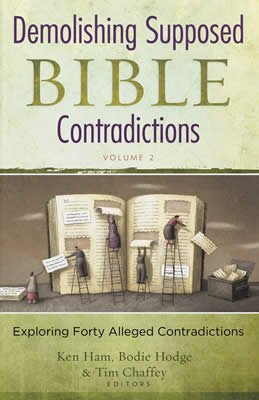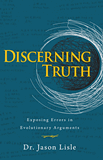
When Did Jesus Cleanse the Temple?
The Gospel of John states that Jesus cleansed the temple early in His ministry, but the other Gospels place the temple-cleansing near the end of His ministry. Who is right?
The “Problem”
The second chapter of John explains that during the Passover, Jesus went to the temple in Jerusalem, made a whip of cords, and drove out the money changers who were doing business there. He also poured out the money and turned over the tables (John 2:13–15). Jesus said to those who sold doves, “Take these things away! Do not make My Father’s house a house of merchandise!
” (John 2:16).
The Synoptic Gospels (Matthew, Mark, and Luke) also tell of Jesus entering the temple, driving out those who bought and sold, overturning their tables, and telling the crowd that they had turned the temple into a “den of thieves
” (Matthew 21:12–13; Mark 11:15–17; Luke 19:45–46).
Some Christians believe these accounts describe the same event, but there is a problem. John describes the cleansing of the temple as occurring during the first Passover (of three) mentioned in his Gospel. Meanwhile, Matthew, Mark, and Luke all describe the temple-cleansing as taking place just days before Christ’s Crucifixion. Is this a contradiction and if so, who is right?
The Solution
Just because two accounts are similar, it does not mean they refer to the same thing.
Students of the Bible need to realize that similarity does not necessarily equal same-ness. In other words, just because two accounts are similar, it does not mean they refer to the same thing. In this case, the solution is actually quite simple. Jesus cleansed the temple on at least two occasions. The first time was near the beginning of His ministry, as described in John. The final time was just prior to His death, as described in the Synoptics.
The critic might protest and suggest this is simply an ad hoc answer (i.e., a solution concocted just to address the objection), but the biblical accounts support this. Furthermore, the biblical authors should be given the benefit of the doubt. So rather than automatically crying “Contradiction!” we should see if a solution can be found.
The most obvious difference has already been explained. These events took place at different points of Christ’s ministry.
When you look closely at these accounts other differences can be found. In John, Jesus was immediately confronted by temple officials who asked, “What sign do You show to us, since You do these things?
” John revealed that the Lord responded by pointing to His future Resurrection: “Destroy this temple, and in three days I will raise it up
” (John 2:19; 2:22). There is no mention of this confrontation or Christ’s prophecy in Matthew, Mark, or Luke.
In contrast to this, the Synoptics record that following the second cleansing, Jesus began to teach those who were in the temple and heal the blind and lame that came to Him.
John wrote that Jesus made a whip of cords and then drove out the money changers. The Synoptics do not mention a whip at all.
The words that Jesus spoke while cleansing the temple are different. As cited above regarding the first temple-cleansing, the Lord stated, “Take these things away! Do not make My Father’s house a house of merchandise!
” (John 2:16). However, during the second cleansing Jesus said, “It is written, ‘My house shall be called a house of prayer,’ but you have made it a ‘den of thieves’
” (Matthew 21:13; Mark 11:17; Luke 19:46). While the message was similar, the words Jesus used to convey His message were different.
Would Jesus Really Do This Twice?
Some may wonder at the plausibility of Jesus cleansing the temple on two occasions, but there is no reason to doubt that He would do this. Remember, Jesus often confronted the religious leaders and challenged their hypocrisy. In this case, the money changers were guilty of turning worship into a matter of convenience while stealing from the people by charging exorbitant prices for substandard sacrificial animals. Instead of following God’s command to offer pure, spotless lambs from their own flocks at Passover (Exodus 12:5), many Jews were guilty of commercializing this process. They simply traveled to Jerusalem and purchased animals from the market at the temple. This is not what the Lord commanded.
Jesus challenged these ungodly practices and urged the people to obey God rather than convenience. In doing so, He also angered Caiaphas, the high priest, whose family was in charge of the money changing in the temple. Not only did the Lord’s actions challenge the authority of Caiaphas, they also hurt his family’s financial holdings since they had grown rich from the sale of sacrificial animals.1
Just as the Old Testament revealed that God was zealous for true worship from His people, Jesus demonstrated that obedience is better than sacrifice. Since Annas and Caiaphas refused to shape up following the first temple-cleansing in John 2, Jesus took another opportunity to remind the people of the importance of true worship.
Conclusion
The solution to this supposed Bible contradiction is rather straightforward. Jesus cleansed the temple on at least two occasions: once at the beginning and again at the end of His earthly ministry. This should not surprise us since God repeatedly stressed in His Word that it is more important to obey Him than it is to perform empty rituals, especially when those rituals are done for convenience or personal gain.
Demolishing Supposed Bible Contradictions: Volume 2
Footnotes
- The respected historian Alfred Edersheim explained that both Josephus and the Rabbinic writings claim that Annas, the father-in-law of Caiaphas, was in charge of the “Temple-market.” The Rabbinic writings referred to this market as the “Bazaars of the sons of Annas” while Josephus claimed that Annas (the son of the high priest Annas) was very rich and guilty of “despoiling by open violence the common priests of their official revenues.” Alfred Edersheim, The Life and Times of Jesus the Messiah, Two Volumes in One, 8th edition (New York: Longmans, Green, and Co., 1896), pp. 371–372.
Recommended Resources

Answers in Genesis is an apologetics ministry, dedicated to helping Christians defend their faith and proclaim the good news of Jesus Christ.
- Customer Service 800.778.3390
- Available Monday–Friday | 9 AM–5 PM ET
- © 2025 Answers in Genesis


